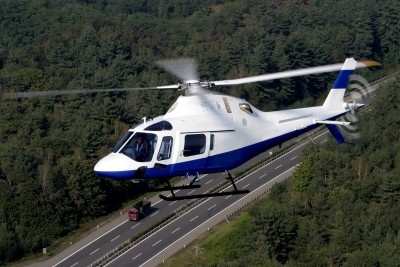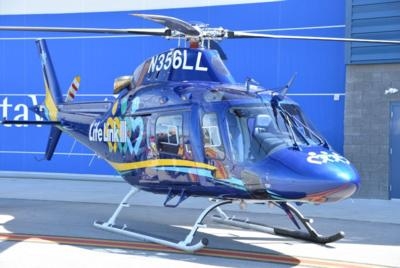Tue, Dec 29, 2020
AD 2020-26-10 Requires Revising The Existing Rotorcraft Flight Manual (RFM)
The FAA is adopting a new airworthiness directive (AD) for all Leonardo S.p.a. (Leonardo) Model A119 and AW119 MKII helicopters.

This AD requires revising the existing Rotorcraft Flight Manual (RFM) for your helicopter and installing a placard to prohibit intentional entry into autorotation. This AD would also allow replacement of an affected fuel control unit (FCU) as an optional terminating action for the RFM revision and placard installation. This AD was prompted by reports that certain FCUs may not have been calibrated to specification during overhaul. The actions of this AD are intended to address an unsafe condition on these products. This AD is effective February 1, 2021.
Supplementary Information: The FAA issued a notice of proposed rulemaking (NPRM) to amend 14 CFR part 39 by adding an AD that would apply to all Leonardo Model A119 and AW119 MKII helicopters. The NPRM published in the Federal Register on June 11, 2020 (85 FR 35602). The NPRM proposed to require revising the Limitations Section of the existing RFM for your helicopter and installing a placard to prohibit intentional entry into autorotation. The NPRM also proposed to allow replacing affected FCUs with non-affected FCUs as an optional terminating action for the RFM revision and placard installation. The proposed requirements were intended to address certain FCUs that may not have been calibrated to specification during overhaul, which can lead to N1 fluctuations, hung engine starts, and the inability to recover power during autorotation training, and possibly result in reduced control of the helicopter.

The NPRM was prompted by EASA AD 2018-0124, dated June 5, 2018, issued by EASA, which is the Technical Agent for the Member States of the European Union, to correct an unsafe condition for all Leonardo Model A119 and AW119 MKII helicopters. EASA advises that certain FCUs may not have been calibrated to specification during overhaul, and that this condition, if not corrected, can lead to N1 fluctuations, hung engine starts, and the inability to recover power during autorotation training, possibly resulting in reduced control of the helicopter. To address this unsafe condition, the EASA AD requires amendment of the applicable RFM and installation of a placard to prohibit intentional entry into autorotation. The EASA AD also allows removal of the RFM limitation and placard after replacement of an affected FCU.
More News
From 2021: The Inside Skinny On What Being An ANN Oshkosh Stringer Is All About By ANN Senior Stringer Extraordinare, Gene Yarbrough The annual gathering at Oshkosh is a right of p>[...]
Video Showed That During The Takeoff, The Nose Baggage Door Was Open On May 10, 2025, about 0935 eastern daylight time, a Piper PA-32RT-300, N30689, was destroyed when it was invol>[...]
Get The Latest in Aviation News NOW on Instagram Are you on Instagram yet? It's been around for a few years, quietly picking up traction mostly thanks to everybody's new obsession >[...]
"I think what is key, we have offered a bonus to air traffic controllers who are eligible to retire. We are going to pay them a 20% bonus on their salary to stay longer. Don't reti>[...]
Aero Linx: Pilot Briefing The gathering, translation, interpretation, and summarization of weather and aeronautical information into a form usable by the pilot or flight supervisor>[...]
 Oshkosh Memories: An Aero-News Stringer Perspective
Oshkosh Memories: An Aero-News Stringer Perspective NTSB Prelim: Piper PA32RT
NTSB Prelim: Piper PA32RT ANN FAQ: Follow Us On Instagram!
ANN FAQ: Follow Us On Instagram! Aero-News: Quote of the Day (05.28.25)
Aero-News: Quote of the Day (05.28.25) ANN's Daily Aero-Term (05.28.25): Pilot Briefing
ANN's Daily Aero-Term (05.28.25): Pilot Briefing




